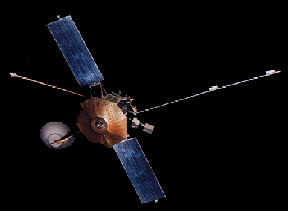Image of Mariner 10
NASA/JPL
Mariner 10
Mariner 10 was launched on Nov. 3, 1973, intended as a flyby of planets Venus and Mercury. It passed Venus in February of 1974, returning over 4000 photographs of the thick cloud cover which surrounds the planet, and information on the atmosphere composition.
Mariner 10 then used the gravitational pull of Venus to accelerate itself toward Mercury, becoming the first spacecraft to visit that planet, on March 29, 1974. During the next year, two more flybys produced a total of 10,000 images, revealing a heavily-cratered surface similar to that on our Moon.
After mapping 57% of Mercury, Mariner 10 ran out of energy and is now in an orbit around the Sun.
You might also be interested in:
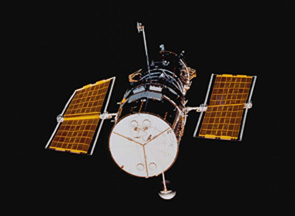
The Hubble Space Telescope (HST) was one of the most important exploration tools of the past two decades, and will continue to serve as a great resource well into the new millennium. The HST found numerous
...more
Driven by a recent surge in space research, the Apollo program hoped to add to the accomplishments of the Lunar Orbiter and Surveyor missions of the late 1960's. Apollo 11 was the name of the first mission
...more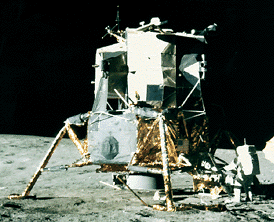
Apollo 12 was launched on Nov. 14, 1969, surviving a lightning strike which temporarily shut down many systems, and arrived at the Moon three days later. Astronauts Charles Conrad and Alan Bean descended
...more
Apollo 15 marked the start of a new series of missions from the Apollo space program, each capable of exploring more lunar terrain than ever before. Launched on July 26, 1971, Apollo 15 reached the Moon
...more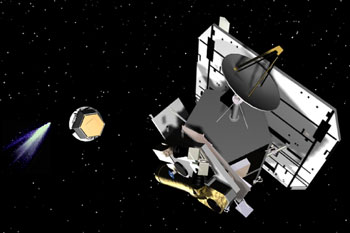
NASA chose Deep Impact to be part of a special series called the Discovery Program on July 7, 1999. The Discovery program specializes in low-cost, scientific projects. In May 2001, Deep Impact was given
...more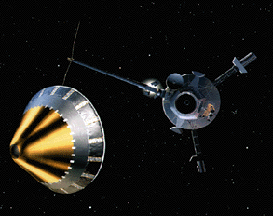
The Galileo spacecraft was launched on October 19, 1989. Galileo had two parts: an orbiter and a descent probe that parachuted into Jupiter's atmosphere. Galileo's main mission was to explore Jupiter and
...more
During 1966 through 1967, five Lunar Orbiter spacecrafts were launched, with the purpose of mapping the Moon's surface in preparation for the Apollo and Surveyor landings. All five missions were successful.
...more
